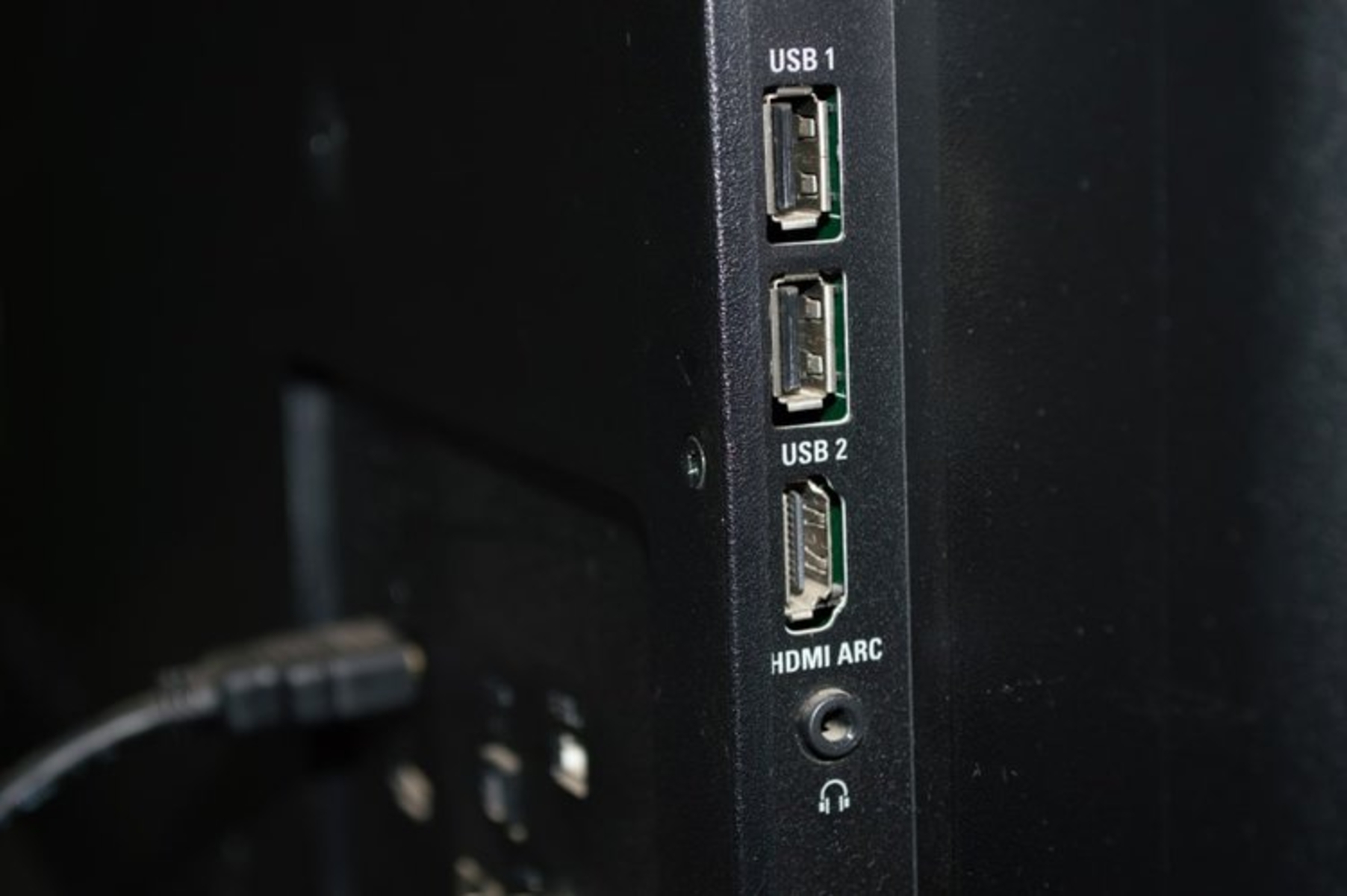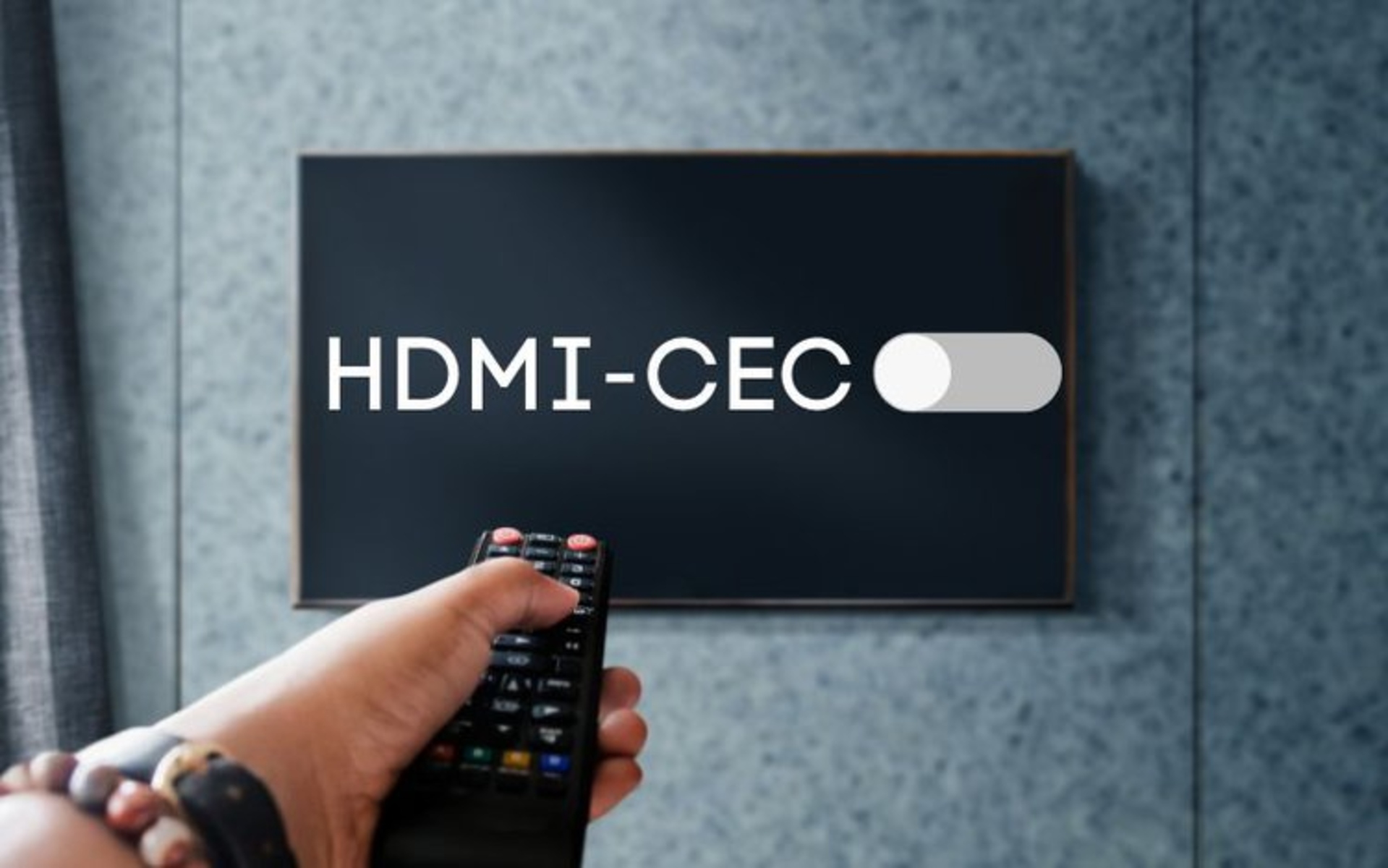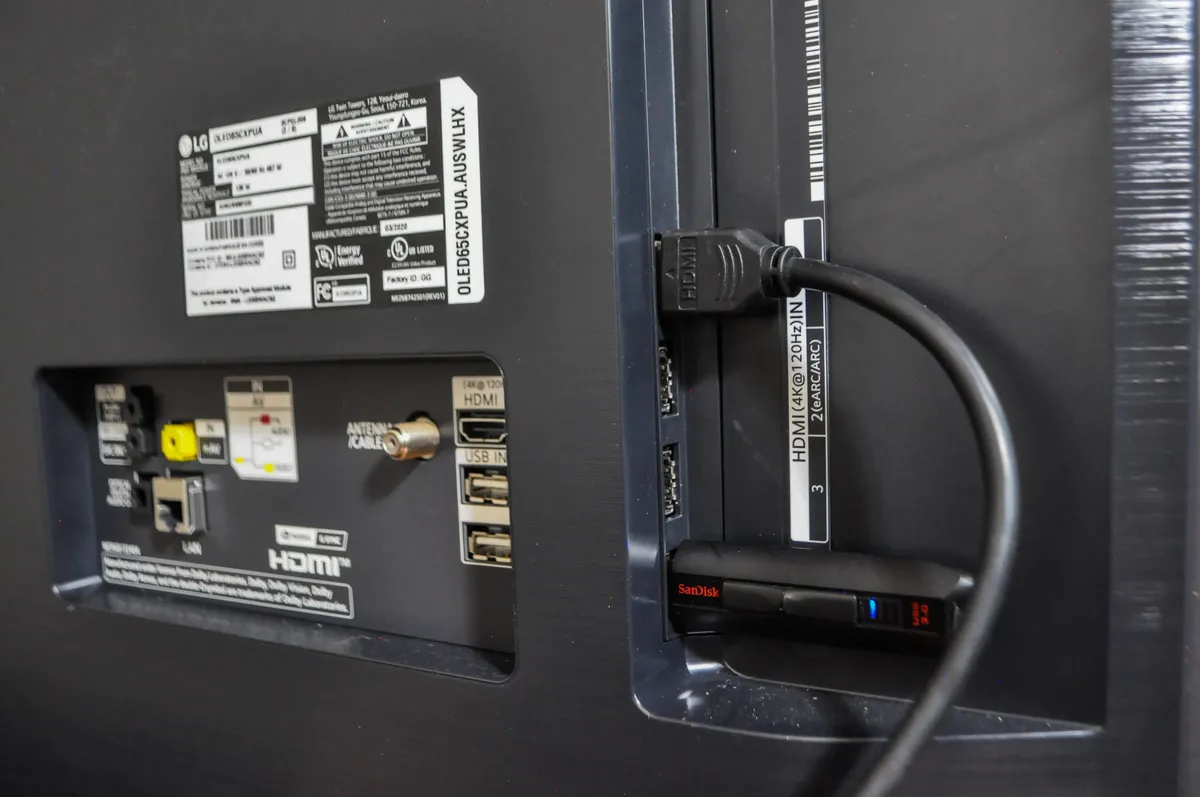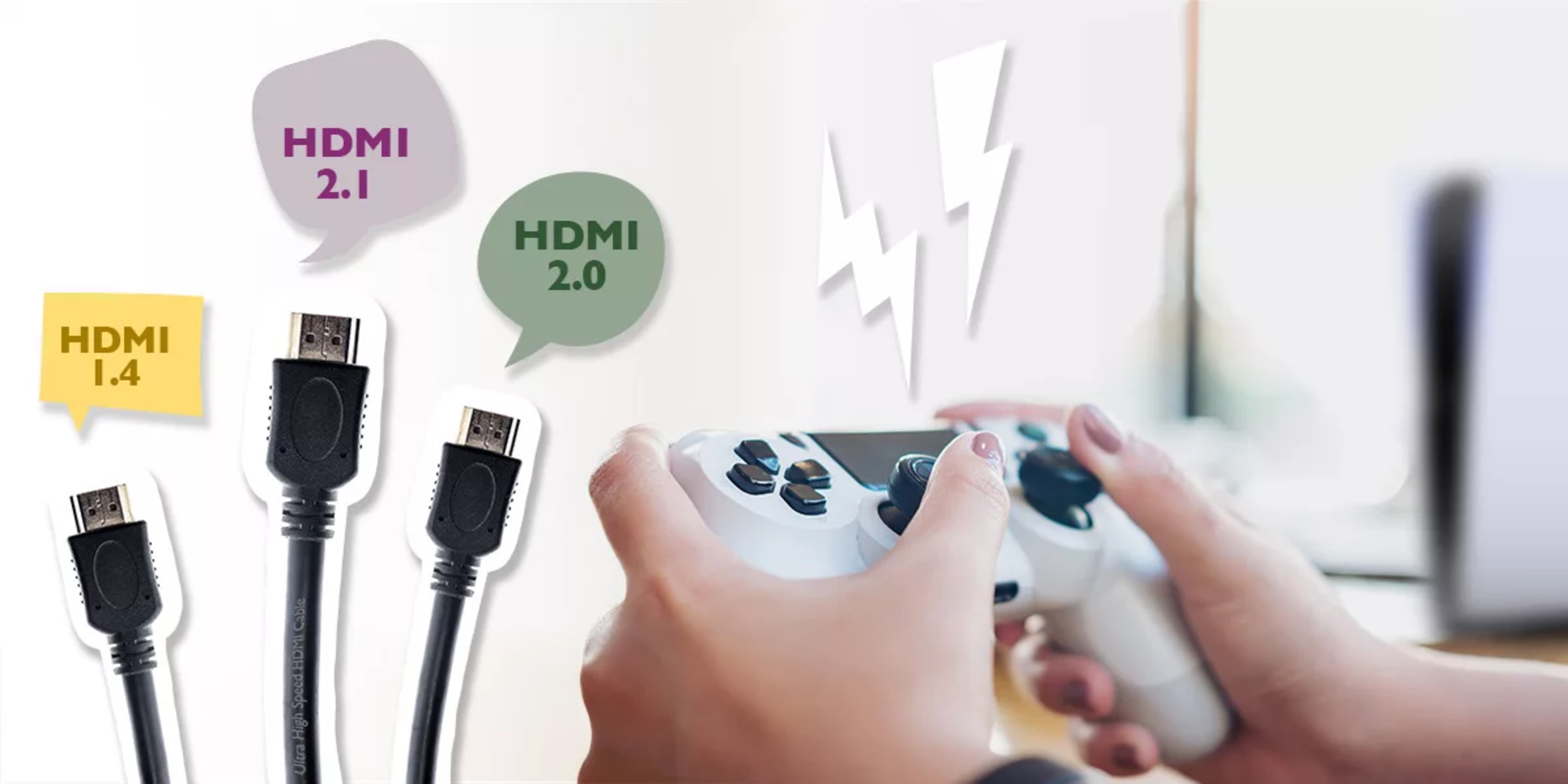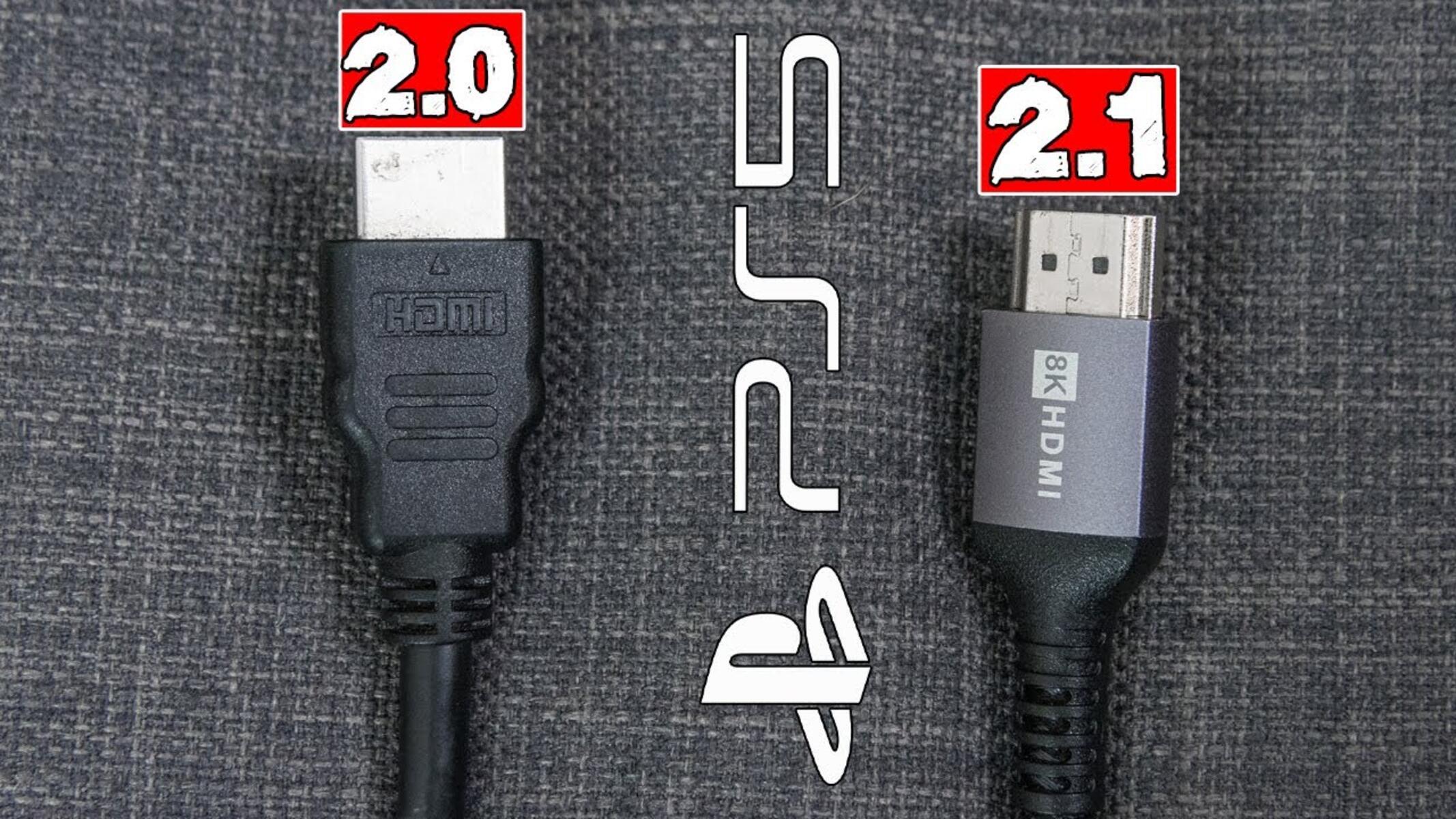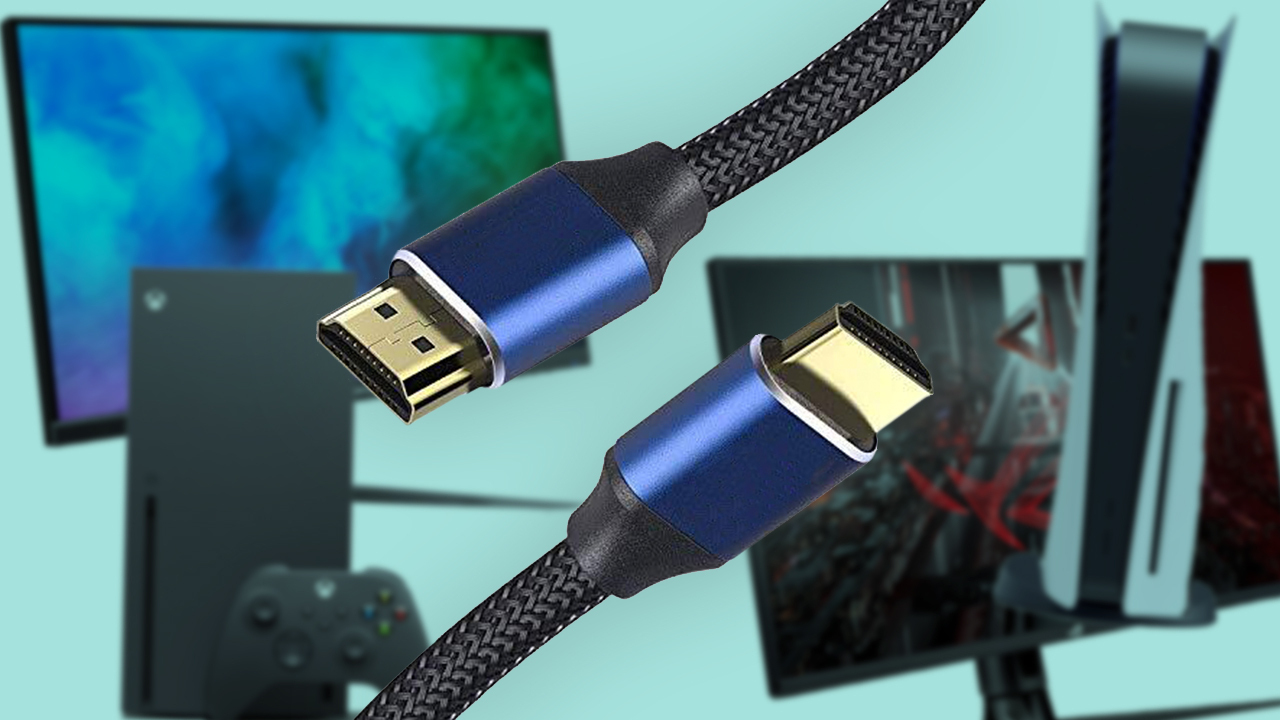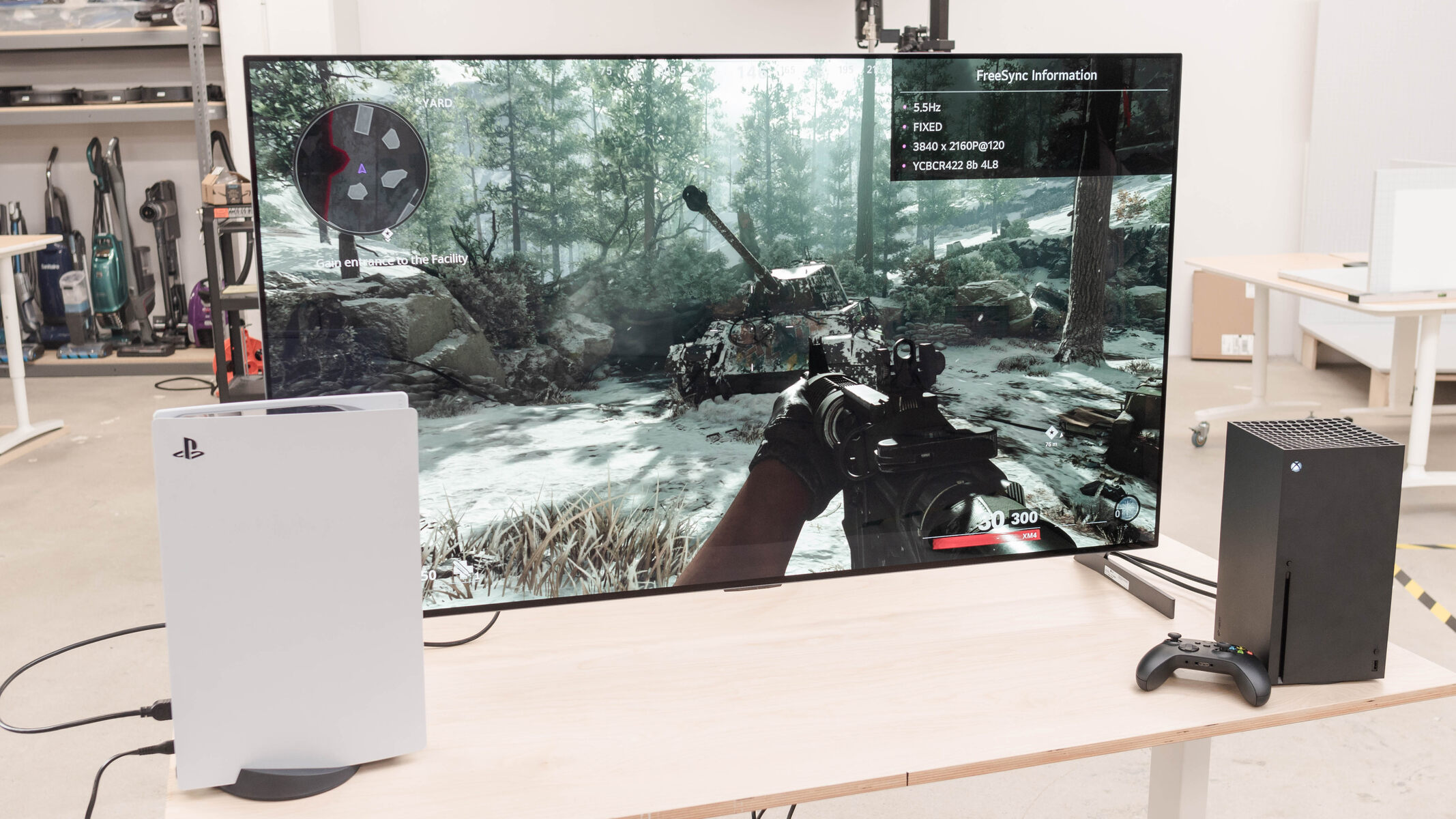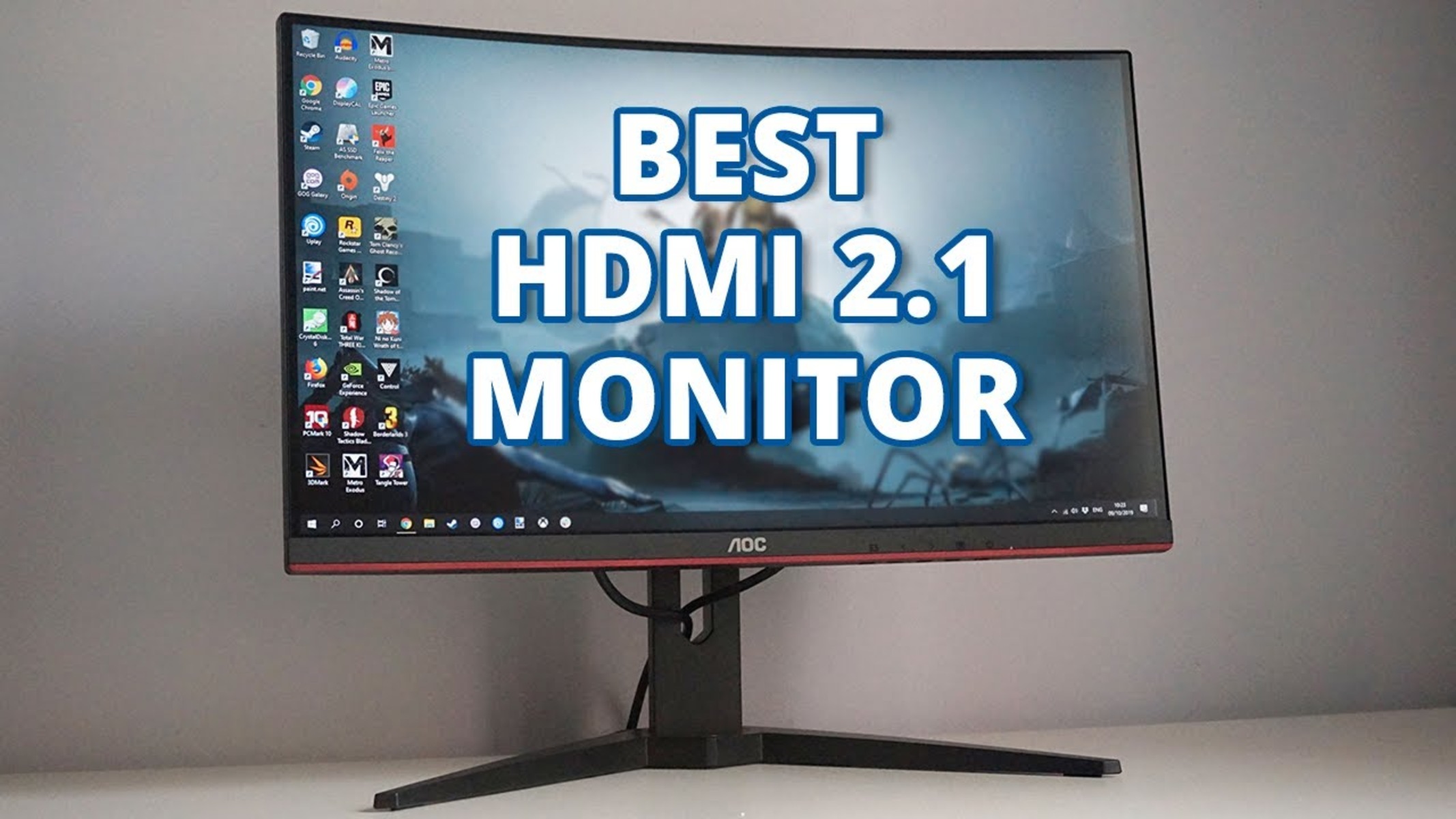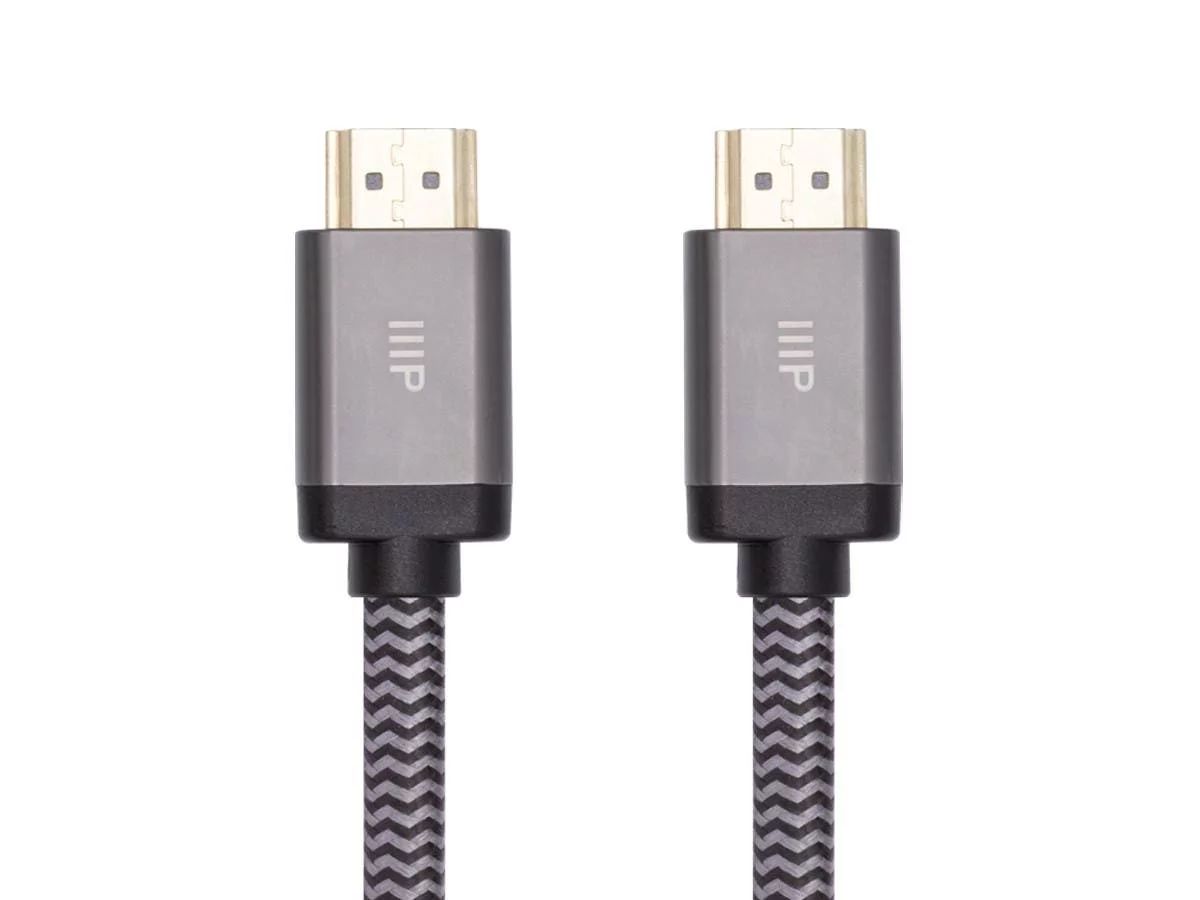How To Tell If Your TV Has HDMI 2.1
If you’re in the market for a new TV or want to make sure your current one is equipped with the latest technology, it’s essential to determine whether it has HDMI 2.1. HDMI 2.1 is the latest version of the HDMI (High-Definition Multimedia Interface) standard, offering enhanced audio and video capabilities. To identify if your TV has HDMI 2.1, follow these steps:
- 1. Check the specifications of your TV: Start by referring to the TV’s user manual or product specifications. Look for any mention of HDMI 2.1 support or features. It should indicate if the TV is equipped with HDMI 2.1 or if it supports specific HDMI 2.1 functionalities.
- 2. Look for HDMI 2.1 labels or logos: Some TV manufacturers may include HDMI 2.1 labels or logos on the TV itself or on the packaging. Look for labels such as “HDMI 2.1 certified” or “HDMI 2.1 compatible.” These indicators can provide confirmation that the TV has HDMI 2.1 capabilities.
- 3. Examine the HDMI ports on your TV: Inspect the physical HDMI ports on your TV. HDMI 2.1 ports are usually labeled as such. You might find text indicating “HDMI 2.1,” “48G” (referring to the 48 Gbps bandwidth supported by HDMI 2.1), or other relevant markings. Keep in mind that some TVs may feature a mix of HDMI 2.1 and older HDMI versions.
- 4. Check the maximum resolution and refresh rate supported: HDMI 2.1 enables higher resolution and refresh rates, such as 4K at 120Hz or 8K at 60Hz. Access your TV’s settings or consult the user manual to verify if it supports these specifications. If it does, there is a higher likelihood that your TV is equipped with HDMI 2.1.
- 5. Research your TV’s model number: Look up your TV’s model number online and search for the specifications on the manufacturer’s website or reputable electronics retailers. Often, these sources provide detailed information about the TV’s HDMI capabilities.
- 6. Consult the TV manufacturer’s website or customer support: If you’re unsure about your TV’s HDMI 2.1 compatibility, visit the manufacturer’s website or reach out to their customer support for assistance. They can provide accurate information based on the specific model and help answer any questions you may have.
- 7. Seek professional help or advice: If you’re still uncertain or want expert guidance, consider consulting a professional technician or visiting a local electronics store. They can assess your TV and provide definitive information regarding HDMI 2.1 compatibility.
By following these steps, you can determine if your TV has HDMI 2.1 or if it supports some of its advanced features. Having HDMI 2.1 ensures that you can take full advantage of the latest audio and video technologies when connecting compatible devices to your TV.
What is HDMI 2.1?
HDMI 2.1 is the latest version of the HDMI (High-Definition Multimedia Interface) standard, which is used to transmit high-quality audio and video signals between devices such as TVs, gaming consoles, Blu-ray players, and soundbars. It offers several advancements over its predecessors, making it an important technology for home entertainment enthusiasts.
One of the main improvements in HDMI 2.1 is the increase in bandwidth capacity. While HDMI 2.0 supported a maximum bandwidth of 18 Gbps (gigabits per second), HDMI 2.1 can handle up to 48 Gbps. This higher bandwidth enables features like higher resolutions, faster refresh rates, and greater color depth.
HDMI 2.1 supports higher video resolutions, including Ultra High Definition (UHD) and 8K. With HDMI 2.1, you can enjoy stunning visuals with a resolution of up to 7680 x 4320 pixels, delivering incredibly sharp and detailed images. This is especially beneficial for larger screens where the increased pixel density enhances the viewing experience.
In addition to higher resolutions, HDMI 2.1 also enables faster refresh rates. While HDMI 2.0 supported a maximum refresh rate of 60Hz at 4K resolution, HDMI 2.1 can achieve refresh rates of up to 120Hz at 4K and 60Hz at 8K. A higher refresh rate results in smoother motion and reduces motion blur, making it ideal for gaming, sports, and action-packed movies.
Another significant feature of HDMI 2.1 is Variable Refresh Rate (VRR), which allows the display to synchronize its refresh rate with the output of the source device. This technology eliminates screen tearing and stuttering, providing a more seamless and immersive gaming experience. VRR is particularly beneficial for gaming consoles such as the PlayStation 5 and Xbox Series X, which can take advantage of HDMI 2.1’s capabilities.
HDMI 2.1 also introduces the Enhanced Audio Return Channel (eARC), which supports high-quality audio formats like Dolby Atmos and DTS:X. This allows for improved surround sound and immersive audio experiences, enhancing the overall enjoyment of movies, music, and games.
It’s worth noting that while HDMI 2.1 offers impressive advancements, not all devices, including TVs, currently support this standard. Therefore, before purchasing a new TV or other HDMI-enabled devices, it’s crucial to ensure they are equipped with HDMI 2.1 if you want to take full advantage of its capabilities.
Why is HDMI 2.1 important for your TV?
HDMI 2.1 is an important technological advancement for your TV, bringing numerous benefits and future-proofing your home entertainment setup. Here are some reasons why HDMI 2.1 is important:
1. Higher Resolutions: HDMI 2.1 supports Ultra High Definition (UHD) and 8K resolutions, delivering stunningly detailed visuals. With HDMI 2.1, you can enjoy razor-sharp images with enhanced clarity and realism.
2. Faster Refresh Rates: HDMI 2.1 allows for higher refresh rates, ensuring smoother and more fluid motion on-screen. This is particularly beneficial for gaming, sports, and action-packed content, where fast-paced visuals require minimal blurring and tearing.
3. Enhanced Gaming Experience: HDMI 2.1 introduces features like Variable Refresh Rate (VRR), Quick Frame Transport (QFT), and Auto Low Latency Mode (ALLM). These technologies reduce input lag, eliminate screen tearing, and enhance responsiveness, resulting in a more immersive and enjoyable gaming experience.
4. Improved Audio: HDMI 2.1 supports the Enhanced Audio Return Channel (eARC), which enables higher-quality audio formats like Dolby Atmos and DTS:X. This means you can enjoy richer, more immersive soundscapes that complement the stunning visuals on your TV.
5. Future-Proofing: Investing in a TV with HDMI 2.1 ensures that you’re prepared for future advancements in audio and video technology. As more content becomes available in higher resolutions and with advanced features, having HDMI 2.1 support guarantees compatibility and optimal performance.
6. Compatibility with Gaming Consoles: The latest gaming consoles, such as the PlayStation 5 and Xbox Series X, utilize HDMI 2.1’s features to deliver superior graphics and smooth gameplay. If you plan to connect these consoles to your TV, having HDMI 2.1 will ensure you can experience their full capabilities.
7. Additional HDMI 2.1 Devices: Apart from gaming consoles, other HDMI 2.1 devices, like Blu-ray players, soundbars, and AV receivers, are entering the market. Having a TV with HDMI 2.1 allows you to take advantage of these devices’ advanced features and create a comprehensive home entertainment system.
Overall, HDMI 2.1 brings significant improvements in video quality, audio performance, and gaming experiences. If you’re looking to upgrade your TV or future-proof your entertainment setup, opting for a TV with HDMI 2.1 capabilities is a wise choice.
Checking the specifications of your TV
When determining if your TV has HDMI 2.1 capabilities, one of the first steps is to check the specifications of your TV. By referring to the TV’s user manual or product specifications, you can find valuable information about its HDMI capabilities. Here are some key things to look for:
1. HDMI 2.1 support: Check if the TV explicitly mentions HDMI 2.1 support in the specifications. Look for phrases like “HDMI 2.1 compatible” or “HDMI 2.1 certified.” If your TV indicates HDMI 2.1 support, you can be confident that it has the necessary hardware to take advantage of the latest HDMI advancements.
2. HDMI 2.1 functionalities: In some cases, a TV may not explicitly state HDMI 2.1 support, but it may mention specific HDMI 2.1 features or functionalities. Check if the TV supports features like higher resolutions, faster refresh rates, Variable Refresh Rate (VRR), or Enhanced Audio Return Channel (eARC). These indicators suggest that your TV is likely equipped with HDMI 2.1 capabilities.
3. Maximum resolutions and refresh rates: Look for information about the maximum resolutions and refresh rates supported by your TV. HDMI 2.1 enables higher resolutions, such as Ultra High Definition (UHD) and 8K, as well as faster refresh rates, including 120Hz at 4K and 60Hz at 8K. If your TV’s specifications mention these capabilities, it’s a good sign that it has HDMI 2.1 support.
4. HDMI version: Some TV specifications may mention the HDMI version explicitly. Look for indications like “HDMI 2.1,” “HDMI 2.0b,” or “HDMI 2.0 with HDCP 2.2.” While these versions are not the same as HDMI 2.1, they can still support certain HDMI 2.1 features. However, for full HDMI 2.1 capabilities, it’s best to ensure the TV explicitly mentions HDMI 2.1 support.
5. HDMI ports: Take note of the number and type of HDMI ports on your TV. HDMI 2.1 ports are typically labeled as such or may mention “48 Gbps” or “HDMI 2.1” in their description. Keep in mind that your TV may have a mix of HDMI ports, including older versions like HDMI 1.4 or HDMI 2.0. Ensure you have at least one HDMI 2.1 port to fully utilize HDMI 2.1 features.
By carefully examining the specifications of your TV, you can gather valuable information about its HDMI capabilities. However, if you’re unsure or need additional confirmation, it’s recommended to cross-reference this information with other methods such as checking HDMI labels on the TV or reaching out to the manufacturer’s customer support.
Looking for HDMI 2.1 labels or logos
When determining if your TV has HDMI 2.1 capabilities, one visual clue to look for is HDMI 2.1 labels or logos. Some TV manufacturers include these labels or logos on the TV itself or on the packaging to indicate HDMI 2.1 compatibility. Here’s what you should keep an eye out for:
1. HDMI 2.1 certified logo: The HDMI Licensing Administrator (HDMI LA) provides a certification program for HDMI products. TV manufacturers can choose to display the official HDMI 2.1 certified logo on their products or packaging. Look for this logo, which typically features the words “HDMI 2.1 Certified” along with the HDMI symbol. Seeing this logo provides a clear confirmation that your TV has HDMI 2.1 capabilities.
2. HDMI 2.1 compatible labels: Manufacturers may also use labels that indicate HDMI 2.1 compatibility without the official certification logo. These labels could include variations such as “HDMI 2.1 compatible,” “HDMI 2.1 ready,” or “HDMI 2.1 supported.” While not as conclusive as the HDMI 2.1 certified logo, these labels still suggest that the TV is designed to work with HDMI 2.1 devices.
3. Check the TV’s bezel or rear panel: Take a close look at the front bezel or rear panel of your TV. Some manufacturers may label the HDMI ports directly on the TV, indicating the HDMI version or capabilities. Look for text that mentions “HDMI 2.1,” “HDMI 2.1 compatible,” or “48 Gbps” (referring to the increased bandwidth of HDMI 2.1). These labels provide a visual confirmation of HDMI 2.1 support.
4. Packaging information: Examine the TV’s packaging for any details regarding HDMI 2.1. Manufacturers often include information about the TV’s features, including HDMI specifications, on the packaging. Look for phrases such as “HDMI 2.1 included,” “New HDMI features,” or “Next-generation HDMI support.” These indications suggest that the TV is equipped with HDMI 2.1 capabilities.
5. Online product listings: If you’re researching or purchasing your TV online, take a close look at the product descriptions and specifications. Manufacturers often mention HDMI 2.1 support or features in these listings. Look for specific keywords like “HDMI 2.1,” “HDMI 2.1 ports,” or “HDMI 2.1 functionalities.” These details can help you confirm if the TV has HDMI 2.1 capabilities.
When evaluating the presence of HDMI 2.1 labels or logos, it’s essential to consider that not all TV manufacturers may use them, especially if the TV supports a mix of HDMI versions. Therefore, while the absence of labels does not necessarily mean your TV lacks HDMI 2.1 support, the presence of these labels provides a strong indication that your TV is equipped with HDMI 2.1 capabilities.
Examining the HDMI ports on your TV
Another way to determine if your TV has HDMI 2.1 capabilities is by examining the HDMI ports on the TV itself. HDMI 2.1 ports often have specific markings or features that differentiate them from older HDMI versions. Here’s what to look for when examining the HDMI ports:
1. HDMI 2.1 labeling: Some TV manufacturers label their HDMI ports to indicate their capabilities. Look for ports that are specifically labeled as “HDMI 2.1” or mention “48 Gbps” (referring to the increased bandwidth of HDMI 2.1). These labels provide a clear confirmation that the respective HDMI ports on your TV support HDMI 2.1.
2. Look for “eARC” support: HDMI 2.1 introduces the Enhanced Audio Return Channel (eARC) feature. If one of the HDMI ports on your TV supports eARC, it is likely to be HDMI 2.1 compatible. Look for the “eARC” label next to or above the HDMI port to identify if this feature is available.
3. Increased number of HDMI 2.1 ports: HDMI 2.1 ports are typically found in newer TV models and may coexist with older HDMI versions (such as HDMI 1.4 or HDMI 2.0). If your TV has multiple HDMI ports, check to see if any of them are specifically designated as HDMI 2.1 ports. The presence of HDMI 2.1 ports is a strong indication that your TV supports HDMI 2.1.
4. Check the physical connector: HDMI 2.1 ports use the same physical connectors as previous HDMI versions, so they may not have a distinct appearance. However, examining the port itself can give you a clue. HDMI 2.1 ports are backward-compatible, meaning they can accommodate older HDMI cables, but they may have enhanced internal circuitry to support the increased bandwidth and features of HDMI 2.1.
5. Consult the TV’s user manual or specifications: If you can’t find any visible indications on the HDMI ports, refer to the TV’s user manual or specifications. Sometimes, manufacturers provide detailed information about each HDMI port, including their supported versions or functionalities. Look for any mention of HDMI 2.1 support or specific HDMI 2.1 features in the documentation.
Remember that not all HDMI ports on your TV may support HDMI 2.1. Older HDMI versions like HDMI 1.4 or HDMI 2.0 may still be present alongside HDMI 2.1 ports. It’s important to identify the specific HDMI ports that support HDMI 2.1 to ensure you can utilize its advanced features and capabilities.
Checking the maximum resolution and refresh rate supported
One effective way to determine if your TV has HDMI 2.1 capabilities is to check the maximum resolution and refresh rate it supports. HDMI 2.1 introduces higher resolutions and faster refresh rates compared to previous HDMI versions. Here’s how to verify this information:
1. Access your TV’s settings: Navigate through your TV’s settings menu and look for display or video settings. In these settings, you may find information about the maximum resolution and refresh rate supported by your TV. If your TV supports resolutions like 4K at 120Hz or 8K at 60Hz, there is a high probability that it has HDMI 2.1 capabilities.
2. Consult the user manual or specifications: Refer to the TV’s user manual or product specifications for details about its resolution and refresh rate capabilities. Look for any mention of support for Ultra High Definition (UHD) or 8K resolutions, as well as higher refresh rates. If the manual explicitly states these specifications, it’s likely that your TV has HDMI 2.1 support.
3. HDMI cable requirements: HDMI 2.1 introduces higher bandwidth, which may necessitate the use of specific HDMI cables. Check the requirements for HDMI cables mentioned in your TV’s user manual or specifications. If it specifies using “HDMI 2.1 cables” or “Ultra High Speed HDMI cables,” it indicates that your TV is designed to support HDMI 2.1 features.
4. Look for 4K 120Hz or 8K 60Hz labels: Some TVs may display labels near the HDMI ports or on the packaging that indicate support for specific resolutions and refresh rates. Look for labels that mention “4K 120Hz” or “8K 60Hz.” These labels suggest that your TV has the necessary HDMI 2.1 capabilities to handle these higher resolutions and refresh rates.
5. Online research: If you’re unable to find the resolution and refresh rate information through the TV’s settings or documentation, consider conducting online research. Look for your TV’s specific make and model and search for its detailed specifications on the manufacturer’s website or reputable electronics retailers. They often provide comprehensive information about the resolution and refresh rate capabilities of the TV.
By checking the maximum resolution and refresh rate supported by your TV, you can get a good idea of whether it has HDMI 2.1 capabilities. However, keep in mind that other factors, such as firmware updates and hardware limitations, may also impact the HDMI 2.1 functionality of your TV.
Researching your TV’s model number
One reliable method to determine if your TV has HDMI 2.1 capabilities is by researching the model number of your TV. By conducting a thorough online search or referring to reputable sources, you can gather valuable information about your TV’s HDMI specifications. Here’s how to research your TV’s model number:
1. Online search engines: Use search engines like Google, Bing, or Yahoo to search for your TV’s model number. Include keywords such as “HDMI 2.1,” “HDMI 2.1 support,” or “TV model number specifications.” This search can lead you to relevant online forums, articles, or product listings that provide information on your TV’s HDMI capabilities.
2. Manufacturer’s official website: Visit the official website of your TV’s manufacturer. Look for a support or product page that allows you to search for your specific TV model. Enter the model number and review the listed specifications or product details. The manufacturer’s website often provides detailed information about the HDMI capabilities, including whether the TV supports HDMI 2.1.
3. Reputable electronics retailers: Visit reputable electronics retailers’ websites and search for your TV’s model number. Retailers like Amazon, Best Buy, or Walmart often provide detailed information about the products they sell. Check the product description or specifications to find any references to HDMI 2.1 support or related features.
4. Online user manuals or documentation: Sometimes, manufacturer websites or other reliable sources provide access to user manuals or documentation for your specific TV model. These manuals can contain detailed information about the TV’s HDMI capabilities. Look for sections specifically related to HDMI or connectivity to find information about HDMI 2.1 support.
5. Professional reviews and technology publications: Seek out professional reviews or technology publications that have reviewed your TV model. These sources often provide detailed insights into the TV’s features and specifications, including its HDMI capabilities. Pay attention to any mentions of HDMI 2.1 support or related functionalities during these reviews.
By researching your TV’s model number, you can gather information from various sources to determine if it has HDMI 2.1 capabilities. Keep in mind that the accuracy and availability of information may vary, so it’s crucial to cross-reference information obtained from multiple reputable sources.
Consulting the TV manufacturer’s website or customer support
If you’re still unsure about your TV’s HDMI 2.1 compatibility after conducting your own research, one of the best sources of information is to consult the TV manufacturer’s website or customer support. Here’s how you can gather accurate and reliable information:
1. Manufacturer’s website: Visit the official website of your TV’s manufacturer. Look for a support or contact section where you can find information regarding technical specifications or HDMI compatibility. Search for a dedicated page or FAQ that addresses HDMI 2.1 support for your specific TV model. The manufacturer’s website is a reputable source and can provide accurate information based on the product’s specifications.
2. Customer support: Reach out to the TV manufacturer’s customer support directly. They can provide detailed information specific to your TV model and answer any questions you may have. Contact information for customer support can often be found on the manufacturer’s website. Be prepared to provide the model number of your TV when reaching out to ensure that you receive the most accurate information.
3. Live chat or online support: Some manufacturer websites offer live chat or online support options. Utilize these features to ask specific questions about HDMI 2.1 compatibility. Live chat or online support agents are trained to provide accurate information and can assist you in understanding your TV’s HDMI capabilities.
4. Email communication: If live chat or online support is not available, you may have the option to contact the manufacturer via email. Compose a detailed email explaining your inquiry about HDMI 2.1 compatibility and include your TV’s model number. This allows the manufacturer’s support team to provide a specific and accurate response to your query.
5. Social media channels: Some TV manufacturers have active social media channels, such as Twitter or Facebook. You may be able to ask questions or seek clarification about HDMI 2.1 compatibility through direct messaging or by leaving a comment on their posts. Keep in mind that response times and the level of detail provided may vary through this communication channel.
Consulting the TV manufacturer’s website or customer support is a reliable way to obtain accurate information about your TV’s HDMI 2.1 compatibility. By reaching out to the experts, you can get the most up-to-date and specific information regarding your TV model’s HDMI capabilities.
Seeking professional help or advice
If you’re still uncertain about your TV’s HDMI 2.1 compatibility or want expert guidance, seeking professional help or advice can provide you with the necessary clarity. Here are some options to consider:
1. Professional technicians: Contacting a professional technician who specializes in audiovisual installations or TV repairs can help assess your TV’s HDMI capabilities. They can examine your TV, check the ports, and provide expert insight into whether it supports HDMI 2.1. Additionally, they can recommend any necessary upgrades or modifications to ensure optimal performance.
2. Local electronics stores: Visit local electronics stores that have knowledgeable staff members. Explain your concerns about HDMI 2.1 compatibility, and they can assist you in verifying your TV’s capabilities. They can help identify HDMI 2.1 features, inspect the TV’s ports, and provide advice on compatibility with other devices or accessories.
3. Home theater installers: Consulting with home theater installers can be beneficial, especially if you’re considering upgrading your entire home entertainment system. These professionals are knowledgeable about the latest technologies, including HDMI 2.1, and can recommend the best TV models and accompanying devices that meet your requirements.
4. Online audiovisual forums and communities: Participate in online forums and communities specialized in audiovisual equipment and home theater setups. Engage with experienced members who may have similar TV models or HDMI 2.1 knowledge. Seek their advice and share your concerns to gain insights based on their expertise and personal experiences.
5. Audiovisual consultants: Hiring an audiovisual consultant can be a wise investment if you’re looking for a comprehensive assessment of your current setup or considering an upgrade. These professionals have in-depth knowledge of the latest technology trends, including HDMI 2.1, and can provide tailored recommendations based on your specific needs and budget.
Seeking professional help or advice allows you to benefit from the expertise of individuals who are knowledgeable in the field of audiovisual technology. They can provide accurate assessments, recommendations, and solutions tailored to your situation, ensuring that you make informed decisions regarding your TV’s HDMI 2.1 compatibility.
Conclusion
Identifying if your TV has HDMI 2.1 capabilities is crucial for ensuring optimal audiovisual experiences and compatibility with the latest devices. By following the methods discussed in this article, you can determine if your TV supports HDMI 2.1.
Start by checking the specifications of your TV, looking for any explicit mention of HDMI 2.1 support or specific HDMI 2.1 features. Additionally, keep an eye out for HDMI 2.1 labels or logos on the TV itself or on the packaging, as they provide visual confirmation of HDMI 2.1 compatibility. Take note of the HDMI ports on your TV, looking for any specific labeling or indications of HDMI 2.1 support.
Checking the maximum resolution and refresh rate supported by your TV can also help determine if it has HDMI 2.1 capabilities. HDMI 2.1 supports higher resolutions, such as 4K at 120Hz or 8K at 60Hz, offering more detailed and smoother visuals. Researching your TV’s model number can provide valuable information by referring to the manufacturer’s website, product documentation, or reputable sources.
For additional assurance, consult the TV manufacturer’s website or customer support, as they can provide accurate and specific information about your TV’s HDMI 2.1 compatibility. If you’re still uncertain, seeking help from professional technicians, local electronics stores, or audiovisual consultants can provide expert guidance and advice.
By employing these methods, you can determine if your TV has HDMI 2.1 capabilities, ensuring that you’re ready to take advantage of the latest advancements in audio and video technology. Whether you’re a movie buff, avid gamer, or simply want the best viewing experience, having HDMI 2.1 support on your TV can significantly enhance your audiovisual enjoyment.







